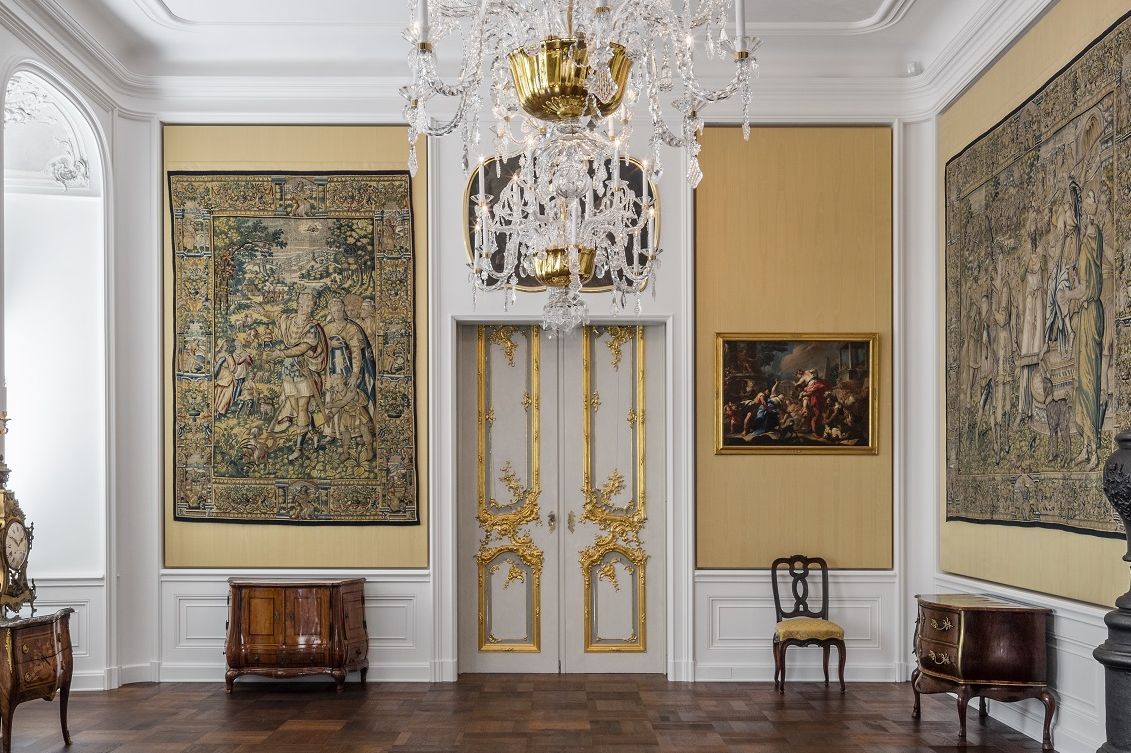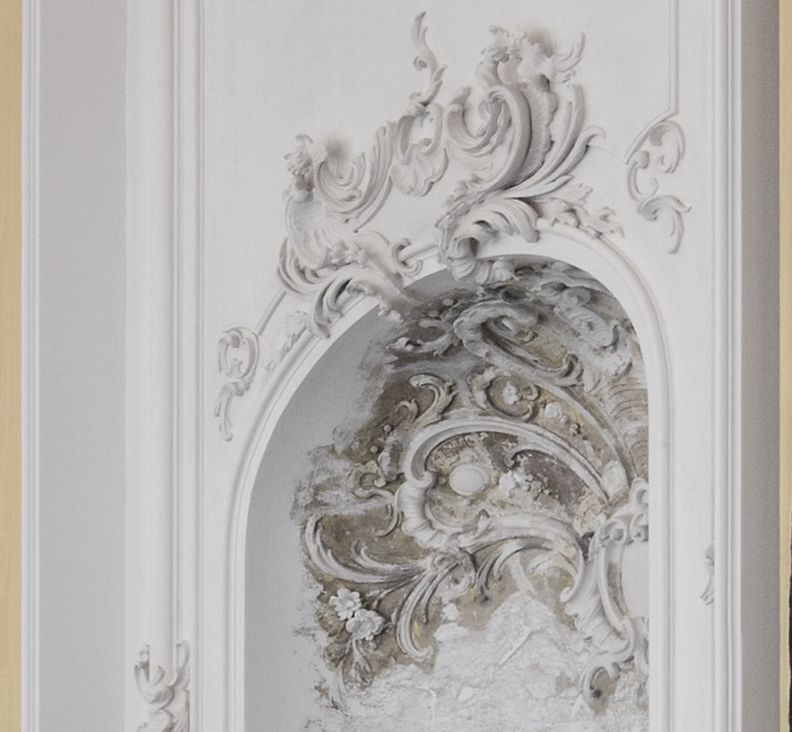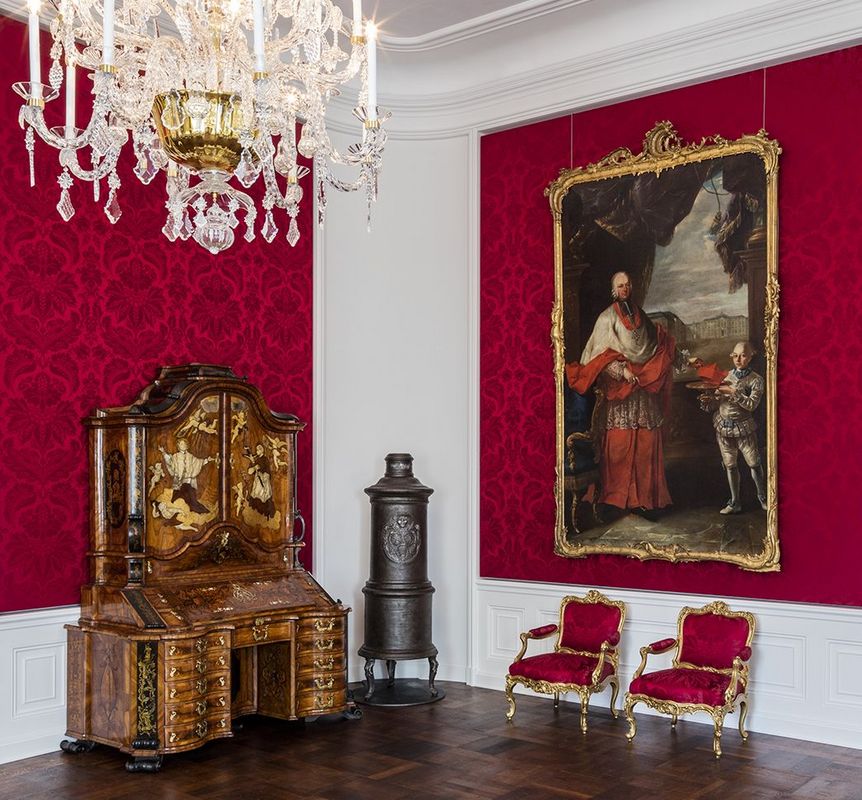Traces of the Rococo periodThe southernstate apartment
When important visitors were staying in the palace, the master of the house left them the sumptuous northern apartment and moved into the more modest south wing. However, the difference between the sequence of rooms was slight, as both state apartments had to appropriately represent the prince-bishop.









